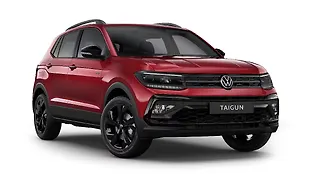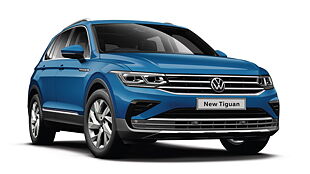Introduction

The Polo has been one of the most unfortunate victims of the Indian regulations because despite the build quality, great handling and contemporary European styling, the anorexic engines were a downer. It ended being an option in the premium hatchback segment instead of being an obvious choice. This is exactly what Volkswagen aims to change and has worked hard to iron out all the irregularities of the car with the facelifted Polo.
The Polo now gets a new heart and it is the highlight of the new car that has transformed the way it drives. This new engine displaces 1.5-litres and is a re-bored version of the 1.6-litre engine found in the Vento and the old Polo GT TDI. There are some subtle changes to the exterior and interior as well. So, is the Polo now good enough to become the best-seller in the premium hatchback segment?
Exterior & Design

If it ain’t broke, don’t fix it. While the emphasis seems to have been more on playing safe, it seems like VW has played it too safe. The facelifted Polo gets subtle revisions to the front with a new bumper, double-barrel headlights and static cornering lamps placed next to the fog lamps. The static cornering lamps which work upto 40kmph are a segment first. The three slat front grille has two black slats and a chrome one at the bottom and the chin gets a longer chrome slat that runs through the grille ending at the bottom of the fog lamps. We appreciate this minimal, but clever use of chrome, in comparison the Punto Evo’s frontal styling. The side profile of the car is the same and the only difference one will notice is the new 10-spoke alloy wheels that look classy. The rear looks similar, but the bumper is new and gets a new lower half that incorporates reflectors on either sides. The layouts of the tail lights are same, but it gets angular from inside and look better defined. VW has introduced a new shade of ‘copper orange’ which isn’t as impressive as the flash red the pre-facelift model wore. The Polo is a common sight on our roads and despite that fact, it still manages to catch our attention in flash red, which is what this new shade couldn’t manage. We aren’t complaining, but we would have loved the metallic red that is available on the European model. The flash red is still available and the new colour takes the tally up to six colours on the palette to choose from.


I have always liked the understated, classy European design of the Polo; the facelift just makes it look better. The Polo now looks much sharper from the front and although the rear doesn’t incorporate as many changes, its tautness is evident.
Interior

Step inside and for someone who has driven the outgoing model, it all looks familiar. The dashboard layout is the same, but the dual-tone beige and non-reflective black colour combination is new. The new desert beige upholstery is bright and spices up the interior. The Golf-style flat-bottom three-spoke steering wheel looks like it belongs to an expensive car and is excellent to hold. The steering wheel gets buttons that control the audio system and the multi-information display. The MID controls on the steering wheel allows you to keep your hands on it all the time as its placement earlier was on the column stalk and the button was fidgety to use. The instrument cluster retains the two large dials with tachometer on the left and speedometer on the right. In between lurks the change - the multi-information display gets easy-to-read white fonts and the new function which shows the maximum speed is 250kmph, which we found a bit cheesy. The centre console and steering wheel boss get brushed aluminium surrounds adding to the premium look. Every bit inside the Polo you touch exudes quality, when it comes to the interior fit, finish and quality the Polo is right up there. Everything seems to be well put together and the interior is the best-in-class.

The integrated audio system is compatible with USB, AUX-in, SD card, can pair with your Bluetooth devices and play your CDs too. The sound quality is decent and one won’t be disappointed with this system. It can take voice commands and the call quality with the phone paired to the audio system is good.

The front driver’s seat with height adjustment and the telescopic steering wheel makes it easy to find an ideal driving position. The seats are supportive and are comfortable over long drives. We cribbed about the lack of sufficient lumbar support in the outgoing model which seems to have been fixed, but it can be better. The rear seat remains a weakness of the Polo. It hasn’t changed a single bit, the new specification sheet reads the Polo has a wheelbase longer by about 13mm, which aids the legroom getting a minor improvement complemented by the scooped out front seats. Seating three abreast is a task and the headroom is not the best-in-class, the Swift in comparison has a higher set rear seat and feels a little more comfortable than the Polo. The Polo boasts the largest boot capacity in the class at 294litre followed by the Hyundai Elite i20 at 280litre.
While VW offers auto up/down on all four windows, we were disappointed at the lack of automatic retract for the ORVMs. They are not treating Indian customers differently as this feature is not available in the European car either.
Engine & Performance

The new 1.5-litre TDI is a re-bored version of the 1.6-litre TDI engine that will be used in the upcoming GT TDI and the Vento, but in a different state of tune. This engine deploys a Variable Geometry Turbocharger (VGT) and churns out an impressive 89bhp of maximum power at 4200rpm and 230Nm of maximum torque flowing between 1500-2500rpm. The power output has gone up by 15bhp and the torque figure sees a huge bump of 50Nm over the outgoing car.
Crank it and the difference is immediately evident, refinement levels are better, vibrations are well contained and the gruff note of the old car has vanished. Although, it is still not one of the quietest small diesel cars around, the Swift’s MultiJet engine is more refined, but the better insulation of the Polo helps you concentrate on music or a conversation with your passenger. On the move, the VGT gives the engine a lot of flexibility, with useable torque kicking in from as low as 1400rpm and power not tailing off until 4000rpm. The engine continues revving all the way up to its high 5400rpm redline. However, beyond the 4000rpm mark there is no poke and the power to noise ratio tilts in favour of the latter.

Performance is as good as it gets, the engine is happy ambling along in traffic or doing high speeds on the highway. It is very eager to respond and its performance is effortless. It feels very sprightly and we won’t be surprised if it turns out to be the quickest car at that price. What adds to the pleasure of using all this power is the slick gearbox, which is one of the best around; it slots precisely and is a joy to use. The gearing is spot on for the power on offer and punting around traffic in the city is effortless, however the heavy clutch takes some time getting used to. On the highway, the engine comes on song with overtaking needing just a gentle prod of the loud pedal. Cruising along at highway speeds of 100 kmph, the rev counter was still under 2500rpm. The claimed fuel economy figure of the new car is 20.14kmpl (ARAI) in comparison the old car managed 22kmpl (ARAI). Our test car was indicating about 14.6kmpl on the display and was driven hard all the time; with some judicious use of the gas pedal the figure will rise. The competition like the Swift in comparison does 22.9kmpl (ARAI) but we believe that its torque figure more than makes up for the kpl lost.
Ride & Handling

In a bid to achieve a better ride, VW has reworked the suspension and made it a bit softer. The Polo now rides better at low speeds and doesn’t crash through potholes like the outgoing model. With every action there is an equal and opposite reaction, while the ride gets better some of its handling panache is lost. It still goes around bends really well, but feels skittish at the limit without being scary. However, make no mistake the Polo hasn’t lost its handling characteristics. Mid-corner bumps and undulations while cornering are taken in its stride without a complaint. The Swift and the Punto Evo are the best handlers in the segment, but the Polo remains the obvious choice for the enthusiast. The tyre size is just right and the Polo isn’t under-tyred, but the stock Apollo Acceleres aren’t the stickiest rubberaround and owners who feel short-changed for grip should upgrade.
The car maintains its cool at high speeds and despite the setup being marginally softer, high speed damping is not bad. The overall ride quality has improved and the Polo takes our broken roads with aplomb. It does exceedingly well in this department and the ride is one of the best in the segment.
The speed sensitive electric power steering feels a tad heavier than before, but at high speeds it should put on more weight (pun intended). The Polo still feels good around bends and equally good doing the city chores. It manages to emerge as the clear winner in the ride and handling department, finishing ahead of the Swift and the Punto Evo.
Verdict

The lack of performance was the Achilles heel of the Polo and Volkswagen has addressed it with the new 1.5-litre TDI engine. The new engine feels very nice; it is very eager and is at home in the city and on the highway. Unsurprisingly, the claimed fuel economy figure of the car is lower by 2kmpl, but it is a minor trade-off for the performance it offers.
How much do you get one for? The Polo starts from Rs 4.99 lakh and goes up to Rs 7.39 lakh (ex-showroom Delhi). At this price it is more expensive than the Swift and the Punto Evo, but the most expensive tag rests with the Hyundai Elite i20 at Rs 7.66 lakh. You cannot call any of these cars value for money as you get sedans and crossovers at this price now. But, the whole point of these cars is for buyers who want sedan-like comfort and performance, minus the boot.
The updated Polo has all it takes to be the segment leader; it has a good interior, a powerful engine with the best-in-class torque figure and a good ride and handling package. The top-spec Hyundai Elite i20 is about Rs 27,000 dearer than the Polo and despite the six-speed gearbox and a nice engine it isn’t as involving to drive. Although, the Elite i20 packs in a little more features in comparison, it lacks the soul of a driver’s car. This is where the Polo seems like value for money and is the best driving hatchback one can buy at this price.
Conversely, launching a good car is only half the game won and VW needs to back it with good service. This is one area that VW needs to improve as competitors like Maruti Suzuki and Hyundai are right at the top when it comes to after-sales service.

![Volkswagen Polo [2014-2015] Image Volkswagen Polo [2014-2015] Image](https://imgd.aeplcdn.com/272x153/cw/ec/12907/Volkswagen-Polo-Right-Front-Three-Quarter-55831.jpg?wm=0&q=80)

























